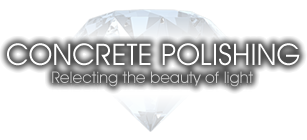Polished Concrete Trends
What does the future hold for polished concrete? Here's a glimpse at the industry's rapid growth and what's in store for the future.
By Bob Harris, The Decorative Concrete Institute, Temple, Ga.
I was recently asked my opinion about where the polished concrete market is going in the future. As I gazed into my crystal ball, trying to predict where the industry is headed, it was clear that I needed to go back in time to the early 1990s, when polished concrete was introduced in this country, and reflect on all the trials and tribulations I and many others in the industry experienced along the way to get where we are today. In predicting the future for polished concrete, I see exciting times and plenty of opportunity ahead. We have not even scratched the surface (no pun intended) of the full potential of the polished concrete market. Here are a few of the trends I'm foreseeing:
Rapid advances in diamond tooling and equipment
Like the computer industry, diamond tooling and concrete polishing equipment seem to change daily and will continue to advance. We now have diamonds that cut faster, last longer and don't leave burn marks or scratches. We have better pads that amp up the shine and systems that significantly reduce the amount of steps needed to produce that high shine we all strive to achieve. Of course, grinding equipment will continue to advance as well. More machines will be propane powered, and they will be lighter, sleeker, faster, and more compact and powerful than ever before.
Better specifications for polished concrete
One of the biggest changes I see is the manner in which new concrete slabs are poured when specifications call for polishing. Early on in the industry, mega-high-performance mix designs were being specified, before contractors began realizing that the coarse diamond tooling would simply skate across the dense surface. What's more, slabs were not being placed within floor flatness and levelness tolerances, setting the stage for a very nonuniform polish. Within the last two years I have really seen a change to the specifications being written for polished concrete that are very beneficial for contractors and polished floor owners. They now make it easier for contractors to achieve the specified finish, such as light sand exposure with no coarse-aggregate exposure.
Traditional polishing outperforms topical polishing
One of the biggest changes I have seen, and one that's often debated, is the growth of topical polishing versus the full grind, hone and polishing process that I and many others prefer. Although, there are certain applications that fit the needs of certain clients, I believe that topical polishing is inferior in most situations. When you consider that one of the weakest parts of the concrete slab is the surface, as a result of finishing, simply burnishing the cream may look impressive when completed, but it will not stand up under extreme conditions when subject to forklift traffic, pallet jacks, and heavy foot traffic. Over the last couple of years, I have compared the wearing of commercial topically polished surfaces with floors that have received traditional full grinding and polishing. Hands down, the full grind and polish outperforms topical polishing in most aspects.
About the author: Bob Harris is president of the Decorative Concrete Institute, an organization in Temple, Georgia, that offers hands-on training and workshops in the latest decorative products and techniques. He also is the author of Bob Harris' Guide to Polished Concrete Floors. For more information, visit www.bobharrisguides.com.

